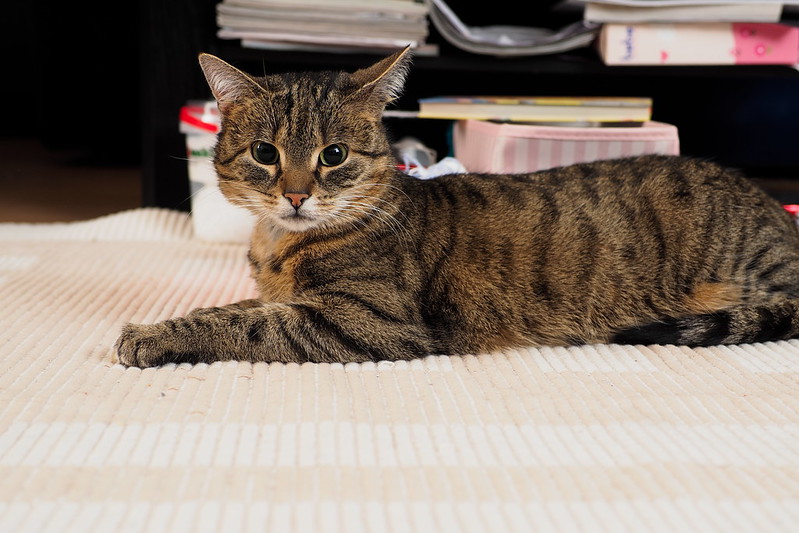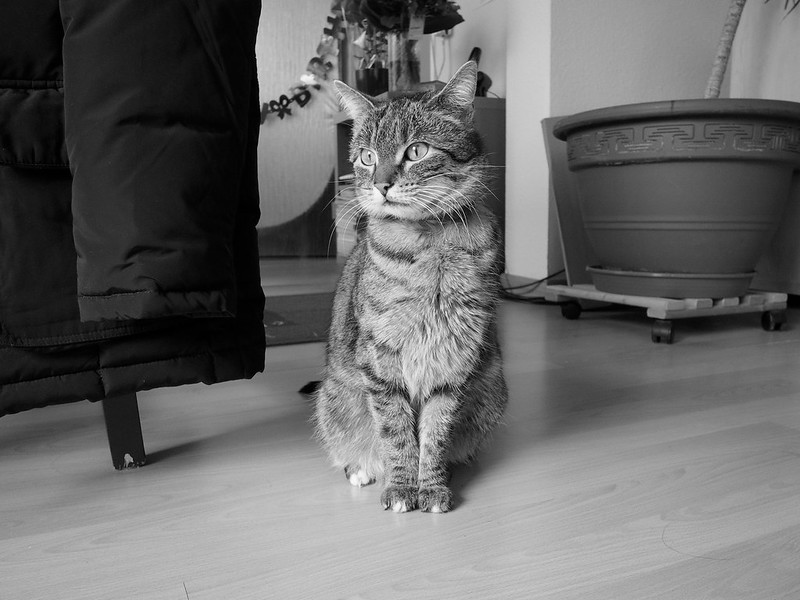When I got up this morning, Zuleikha and Mitchie were making an apple cake. And I started documenting the procedure with the 14mm lens on my E-PL5 and the 25mm lens on my E-M10 cameras.
Later I told them that I could have taken most of the photos with the Olympus 12-40mm zoom lens (for about 1k€), and some even with the “kit” lenses we have, because I used apertures like f/5.6 with that 14mm lens. But this one wouldn’t have been possible with any other lens, since I’ve used my 25mm wide open at f/1.4:
Waiting for the cake
Later I read about old lenses on new cameras, and thought about what I have, like the OM G.Zuiko 50mm/1.4 manual focus lens from my OM-2N film camera. And since I was trying to get some kind of film look lately, I decided to try it again on my digital camera (we still have some film, but that’s not fast enough for low light):
Zuleikha
I cropped that image to a square format, which in my opinion added to some kind of film impression (medium format was also very popular during that time, and many of these produced square negatives).
That image is certainly softer than the one from the modern lens, which was to be expected. But soft isn’t too bad for portraits; I remember one of Yousuf Karsh‘s (famous) clients asking him to have mercy on her. So for portraitists, a lens like this wouldn’t be a bad choice at all – you save lots of (artificial) brush strokes in post processing if you’re more merciful from the get-go. Not that our 11-year-old girl would need it, but for adults this could be an advantage… 😉
Technical info about the last one: this was with the lens on aperture f/4, and with 1/8th of a second at ISO 1600. The main light was a halogen flood light against the ceiling but across the room, full power at 250W. And to Zuleikha’s right (picture left), you have our 5 Watt LED reading light. Camera on tripod, of course manually focused. Added a bit contrast with the Olympus Viewer 3 using an S-curve (Highlights +2, Shadows -3), and blacks, Exif and ITPC data with RawTherapee.
Oh, and the apple cake is delicious. We’ll have the rest of it tomorrow.
Thanks for reading.















